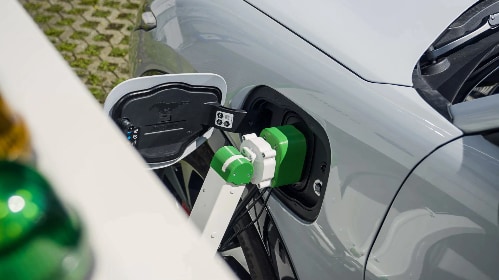

As electric vehicle technology becomes more sophisticated and commonplace, more people are making the switch to a battery-electric or hybrid car as their primary vehicle. However, this doesn’t necessarily mean that EVs are fully accessible to the wider public yet. There are still certain aspects of driving an EV that can pose an issue for drivers with disabilities, and one of these is charging the vehicle.
For someone with reduced mobility due to a disability or old age, going to the gas station or using an EV charger creates a big problem. Getting in and out of the car can be a challenge, as can using the pump or charger itself. In the UK, a recent survey was conducted that discovered that over 60% of disabled drivers would only consider driving an electric vehicle if the charging process was more accessible.
Ford is currently testing prototypes for a robotic EV charging station that would address these issues and make EV charging much easier for disabled drivers. These automated charging stations are operated via smartphone, and the user can either remain in their car during charging or leave and come back after charging has completed. For this trial, the drivers testing the setup used the FordPass app to monitor the charge status.
When the charging sequence is activated, the station cover opens and the automated charging arm guides itself towards the vehicle’s charging port with a small camera. After the charge is finished, the charging arm retracts back into the station.
The prototypes of these charging stations were custom-made by Dortmund University in Germany. They went through an initial lab testing phase, and this trial is the beginning of their real-world testing.
In the future, these hands-free chargers might be installed in parking lots, particularly in disabled parking spaces, as well as at public EV charging stations. They could even be installed in private homes. Their uses aren’t limited to accessibility– they might make charging autonomous vehicles easier with their automated technology, and could be useful in charging commercial fleets as well. This technology can support a more powerful EV charger, meaning that anywhere it might be useful to have fast, efficient charging is a place where this technology could be implemented.
This project drives speculation about what driving might look like in the not-too-distant future. With this technology evolving alongside autonomous vehicle technology, there might become a time where you just send your vehicle out to the local automated charging station to fill up without ever having to leave the house yourself! Only time will tell all the ways that this new prototype could prove useful.